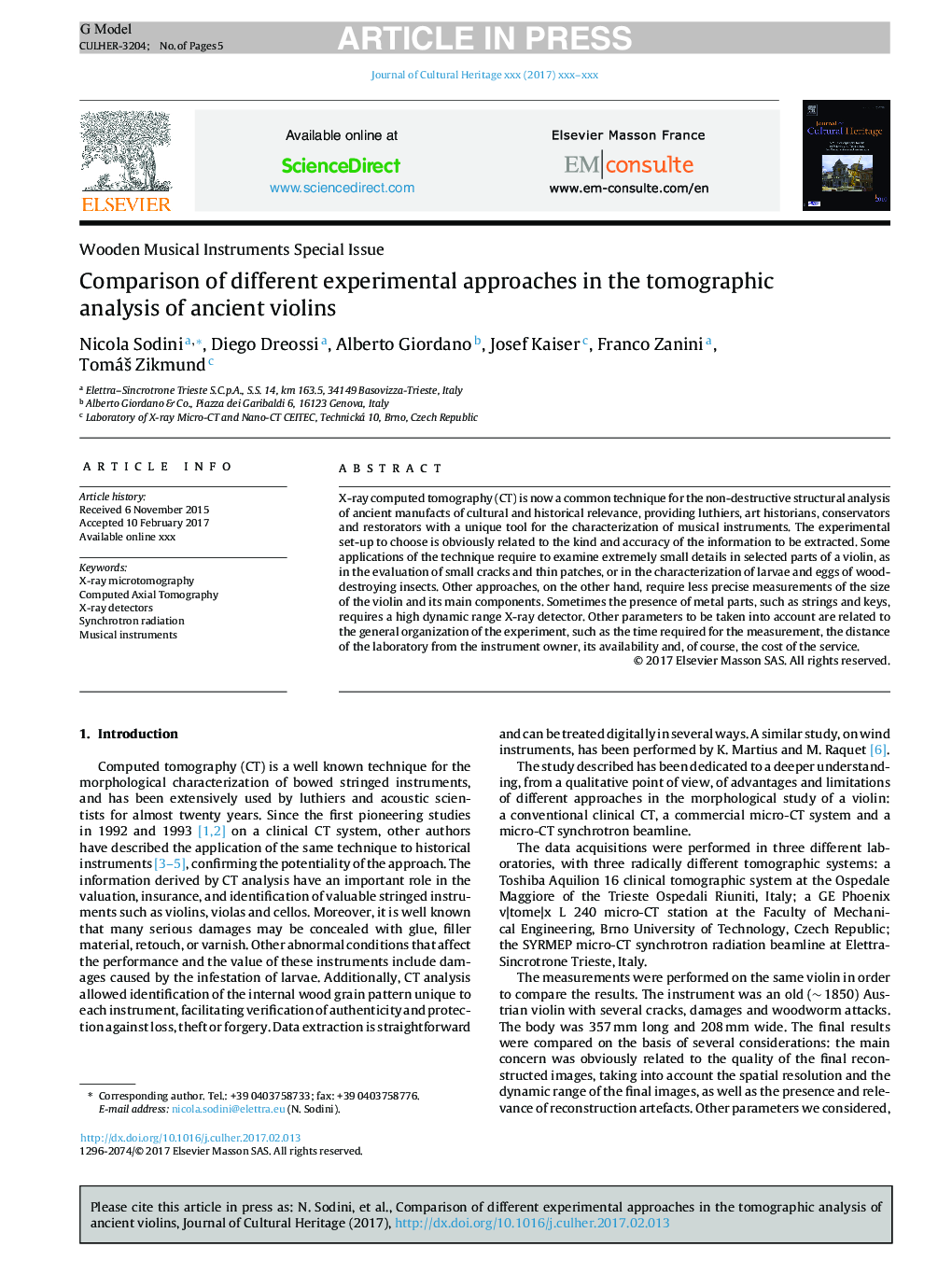| Article ID | Journal | Published Year | Pages | File Type |
|---|---|---|---|---|
| 5112726 | Journal of Cultural Heritage | 2017 | 5 Pages |
Abstract
X-ray computed tomography (CT) is now a common technique for the non-destructive structural analysis of ancient manufacts of cultural and historical relevance, providing luthiers, art historians, conservators and restorators with a unique tool for the characterization of musical instruments. The experimental set-up to choose is obviously related to the kind and accuracy of the information to be extracted. Some applications of the technique require to examine extremely small details in selected parts of a violin, as in the evaluation of small cracks and thin patches, or in the characterization of larvae and eggs of wood-destroying insects. Other approaches, on the other hand, require less precise measurements of the size of the violin and its main components. Sometimes the presence of metal parts, such as strings and keys, requires a high dynamic range X-ray detector. Other parameters to be taken into account are related to the general organization of the experiment, such as the time required for the measurement, the distance of the laboratory from the instrument owner, its availability and, of course, the cost of the service.
Keywords
Related Topics
Physical Sciences and Engineering
Chemistry
Physical and Theoretical Chemistry
Authors
Nicola Sodini, Diego Dreossi, Alberto Giordano, Josef Kaiser, Franco Zanini, TomáÅ¡ Zikmund,
